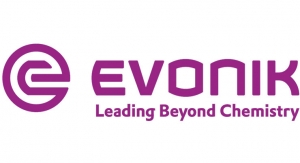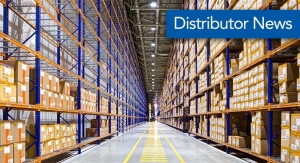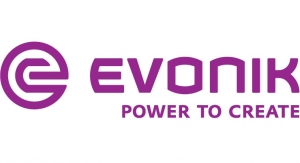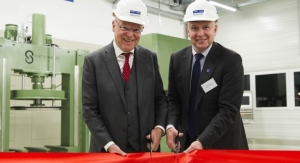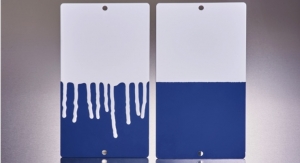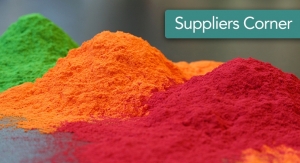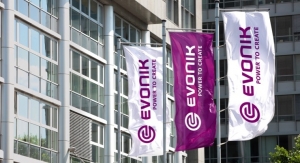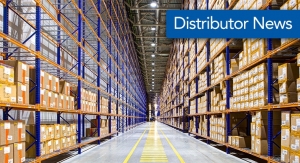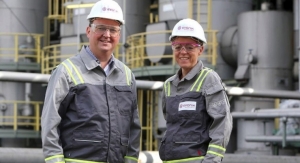Sean Milmo, European Correspondent12.11.19
Customization, particularly by raw material and additives suppliers, is accelerating in the European coatings sector as companies seek ways to differentiate their products and services.
Along the coatings value chain, companies are striving to satisfy the individual needs of customers, which often stem from new opportunities presented by technological advances or a tightening up of specifications due to the introduction of stricter standards.
Meeting more precise requirements may relate just to the quality, safety and functional features of products.
But it can also apply to services, such as the provision of more specialized technical support.
A major force behind customization is the growth of digitalization – defined as the transfer of virtually every function in business from administration, selling and marketing to manufacturing, recycling and waste disposal into the binary language of a computer.
This results in vast amounts of data being collected, stored and hopefully evaluated to improve the operations of a business, including its responses to customer demands.
However, to be effective, digitization has to cover the whole of a business operation.
The company has to undergo a “digital transformation,” according to Mike Bach, chief executive of Prisma, a German software provider specializing in the needs of the coatings sector.
This can often mean a change in corporate culture so that departments no longer retain their own databases but instead have to merge them with a company-wide network. Even data from production processes should be fed into this network.
Digitalization is expected to gradually take over much of the European coatings sector as well as most of its customer sector. But it may be a lengthy procedure.
Surveys show that at present only a relatively small proportion of process industries in Europe, including coatings producers and their raw material suppliers, have become fully digitalized.
An even smaller percentage has started to adopt advanced digital technologies, such as the use of artificial intelligence (AI) and machine learning.
Most companies in the coatings sector appear to be struggling in the adoption of all key aspects of digitalization – data collection, data processing, network building and above all evaluation.
As a result, they are not creating the flow of information – in value or volume terms – necessary to make digitalization work properly.
Most of the pace-setting in digitalization has been – although not exclusively – done by large companies that have a proportion of their portfolios in coatings products and/or raw materials.
They have digitalization schemes covering all the different business segments in their companies.
Evonik, which has now become a major global player in coatings additives, has an ambitious digitalization program extending into some pioneering computer technologies.
Two years ago the company announced it was putting €100 million ($110 million) into digitalization schemes, which included a strategic partnership with IBM and the University of Duisburg-Essen in Germany.
Christian Kullmann, Evonik’s chairman, explained that digitalization brought with it “a world of possibilities.”
“These would be tested to see if the company could “put them to good use,” he added.
In Evonik’s coatings additives business, the objective behind digitalization was to shift the focus to “customer-centricity.”
Digitalization was not just about data and technology but also services to customers, according to Henrik Hahn, Evonik, chief digital officer.
Next year Evonik is due to display its expertise in coatings formulations with the introduction of a voice-controlled digital laboratory assistant called COATINO. It will help formulators in the laboratories of customer companies to research and chose the right ingredients for their coatings.
COATINO will use a pool of data created by an Evonik high-throughput experimentation unit in Essen, Germany, for testing formulations.
The development of the digital assistant has been a tough task. If 10 curing agents, 10 binders and 10 additives are considered in the development of a coating recipe that translates into 10,000 possible combinations. COATINO will initially concentrate on information on existing formulations but it may in the future suggest entirely new ones.
“[It might] become an artificially intelligent entity,’’ explained Gaetano Blanda, head of coatings additives at Evonik. “But we will have a long, long way to go until then.”
BASF, which is both a producer of finished coatings and coatings raw materials, is probably among the most adventurous in digitalization initiatives in the European coatings sector.
Last year it installed a super-computer, called Quriosity, at its headquarters in Ludwigshafen, Germany, which increased by 10 times the overall computing power previously available to BASF researchers.
The company’s coatings business has focused on creating capacity for meeting the tough specifications imposed on suppliers to the OEM auto and aerospace sectors.
In November 2019, BASF Coatings opened a new laboratory at Langelsheim, Germany, for its Chemetall surface treatment business with the objective of being able to “continuously and precisely meet the demands and specific requirements” of the aerospace industry, according to Christophe Cazabeau, senior VP of surface treatment.
“Approvals and specifications are essential for the international aerospace industry,” said Steffen Boberg, Chemetall’s spokesperson for Europe, Middle East, Africa and South America. “Our products cover thousands of global specifications and approvals.”
In the OEM auto sector, BASF Coatings has digitalized its 600 colors for car applications into 3D parameters so that auto designers can use the data for computer-aided design of auto models.
For laboratory work, the business has also developed work processes for fostering customer-specific product development.
However, the big international companies are not the only ones which are active in digitalization. SMEs are becoming aware of the necessity of digitalization for the future of their businesses.
“Digitisation is a requirement for coatings companies to remain competitive,’’ said Ruth Winghart, Prisma’s commercial director. “They need special digitization software for all their processes – in production, sales, R&D and laboratory work – so that they can meet the specific needs of customers better.’’
“Small and medium-sized coatings companies with 200-2,000 employees are among the most active in investing in digitization,” she added. “They are more flexible than larger companies and find it easier to move to more complex processes.”
SMEs will play a crucial role in the European coatings sector in expanding digitalization because of market pressures.
“We are now seeing even the smaller companies with a small number of employees adopting digitalization because they recognize that it helps them to be more competitive,’’ said Winghart.
Along the coatings value chain, companies are striving to satisfy the individual needs of customers, which often stem from new opportunities presented by technological advances or a tightening up of specifications due to the introduction of stricter standards.
Meeting more precise requirements may relate just to the quality, safety and functional features of products.
But it can also apply to services, such as the provision of more specialized technical support.
A major force behind customization is the growth of digitalization – defined as the transfer of virtually every function in business from administration, selling and marketing to manufacturing, recycling and waste disposal into the binary language of a computer.
This results in vast amounts of data being collected, stored and hopefully evaluated to improve the operations of a business, including its responses to customer demands.
However, to be effective, digitization has to cover the whole of a business operation.
The company has to undergo a “digital transformation,” according to Mike Bach, chief executive of Prisma, a German software provider specializing in the needs of the coatings sector.
This can often mean a change in corporate culture so that departments no longer retain their own databases but instead have to merge them with a company-wide network. Even data from production processes should be fed into this network.
Digitalization is expected to gradually take over much of the European coatings sector as well as most of its customer sector. But it may be a lengthy procedure.
Surveys show that at present only a relatively small proportion of process industries in Europe, including coatings producers and their raw material suppliers, have become fully digitalized.
An even smaller percentage has started to adopt advanced digital technologies, such as the use of artificial intelligence (AI) and machine learning.
Most companies in the coatings sector appear to be struggling in the adoption of all key aspects of digitalization – data collection, data processing, network building and above all evaluation.
As a result, they are not creating the flow of information – in value or volume terms – necessary to make digitalization work properly.
Most of the pace-setting in digitalization has been – although not exclusively – done by large companies that have a proportion of their portfolios in coatings products and/or raw materials.
They have digitalization schemes covering all the different business segments in their companies.
Evonik, which has now become a major global player in coatings additives, has an ambitious digitalization program extending into some pioneering computer technologies.
Two years ago the company announced it was putting €100 million ($110 million) into digitalization schemes, which included a strategic partnership with IBM and the University of Duisburg-Essen in Germany.
Christian Kullmann, Evonik’s chairman, explained that digitalization brought with it “a world of possibilities.”
“These would be tested to see if the company could “put them to good use,” he added.
In Evonik’s coatings additives business, the objective behind digitalization was to shift the focus to “customer-centricity.”
Digitalization was not just about data and technology but also services to customers, according to Henrik Hahn, Evonik, chief digital officer.
Next year Evonik is due to display its expertise in coatings formulations with the introduction of a voice-controlled digital laboratory assistant called COATINO. It will help formulators in the laboratories of customer companies to research and chose the right ingredients for their coatings.
COATINO will use a pool of data created by an Evonik high-throughput experimentation unit in Essen, Germany, for testing formulations.
The development of the digital assistant has been a tough task. If 10 curing agents, 10 binders and 10 additives are considered in the development of a coating recipe that translates into 10,000 possible combinations. COATINO will initially concentrate on information on existing formulations but it may in the future suggest entirely new ones.
“[It might] become an artificially intelligent entity,’’ explained Gaetano Blanda, head of coatings additives at Evonik. “But we will have a long, long way to go until then.”
BASF, which is both a producer of finished coatings and coatings raw materials, is probably among the most adventurous in digitalization initiatives in the European coatings sector.
Last year it installed a super-computer, called Quriosity, at its headquarters in Ludwigshafen, Germany, which increased by 10 times the overall computing power previously available to BASF researchers.
The company’s coatings business has focused on creating capacity for meeting the tough specifications imposed on suppliers to the OEM auto and aerospace sectors.
In November 2019, BASF Coatings opened a new laboratory at Langelsheim, Germany, for its Chemetall surface treatment business with the objective of being able to “continuously and precisely meet the demands and specific requirements” of the aerospace industry, according to Christophe Cazabeau, senior VP of surface treatment.
“Approvals and specifications are essential for the international aerospace industry,” said Steffen Boberg, Chemetall’s spokesperson for Europe, Middle East, Africa and South America. “Our products cover thousands of global specifications and approvals.”
In the OEM auto sector, BASF Coatings has digitalized its 600 colors for car applications into 3D parameters so that auto designers can use the data for computer-aided design of auto models.
For laboratory work, the business has also developed work processes for fostering customer-specific product development.
However, the big international companies are not the only ones which are active in digitalization. SMEs are becoming aware of the necessity of digitalization for the future of their businesses.
“Digitisation is a requirement for coatings companies to remain competitive,’’ said Ruth Winghart, Prisma’s commercial director. “They need special digitization software for all their processes – in production, sales, R&D and laboratory work – so that they can meet the specific needs of customers better.’’
“Small and medium-sized coatings companies with 200-2,000 employees are among the most active in investing in digitization,” she added. “They are more flexible than larger companies and find it easier to move to more complex processes.”
SMEs will play a crucial role in the European coatings sector in expanding digitalization because of market pressures.
“We are now seeing even the smaller companies with a small number of employees adopting digitalization because they recognize that it helps them to be more competitive,’’ said Winghart.

